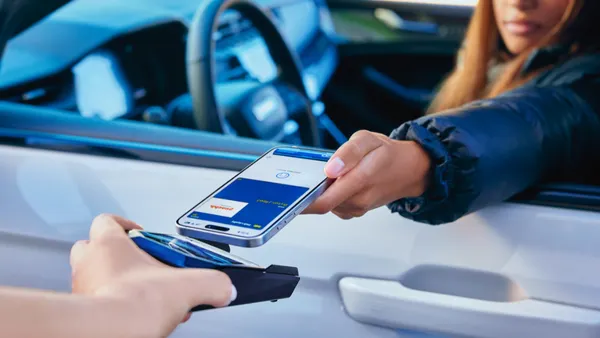Dive Brief:
- Foodservice sales now account for 23% of sales at convenience stores in the U.S., reflecting a 3% growth in the last five years, according to NACS' State of the Industry report.
- While 56% of Americans have purchased a meal at least once per month, 25% of Americans aged 30 to 44 grabbed food five or more times a month. Twenty percent of Americans aged 18 to 29 visit a convenience store for food three to four times per month, according to a study from GasBuddy.
- One in four Americans spent $6 to $10 at least once a week on a convenience store foodservice item, while almost 20% of shoppers between 18-29 sent $10 to $15 at least once a week, per GasBuddy.
Dive Insight:
Convenience stores and gas stations are hot on QSR's heels as Americans find themselves with less time to wait in a drive-thru. Seeing a clear opportunity, many convenience stores have stepped up their food offerings. A number of them now offer all the trappings of current QSR chains, but with gas pumps to let consumers fill up while grabbing a bite to eat.
Wawa, 7-Eleven, Casey's and QuikTrip have also been making efforts to expand both their retail footprints and meal offerings. In March, 7-Eleven launched a lab store in Dallas with ready-to-go items, an in-store taqueria and organic slurpees. On the digital front, Wawa touts a touchscreen ordering system featuring prepared foods and a rewards app. It is also opening up more upscale models in urban areas, complete with comfortable seating. Casey’s has a pizza parlor and bakery with donuts made from scratch, as well as a large seating area for locals and guests to take a break while they eat their meal instead of getting it to go. Many of its store locations also offer pizza delivery. QuikTrip, which just opened its 800th store, expanded its menu last year to include made-to-order sub sandwiches in Tulsa and Wichita.
Supermarket chain Hy-Vee has also dabbled in the convenience store arena, launching a new concept store called Fast & Fresh in the Midwest earlier this year that offers fuel, as well as prepared foods like a box of sushi or a growler of beer.
Convenience stores' ability to offer a wide variety of fare is an advantage over QSR's, which are often pigeonholed into a specific cuisine or type of food based on their branding and marketing. Many convenience stores are also open later than fast food chains and are also cashing in on the food delivery craze, partnering with companies like Postmates.
Short of adding gas pumps to their parking lots, QSR's best option for staying competitive is to add more convenience-related aspects to their offerings. Several, including Wendy's, McDonald's and Shake Shack, are adding self-order kiosks, a technology that is becoming standard in the convenience store industry. QSRs also aren't typically known for their ready-to-go menu items, but it could be an avenue worth exploring if consumers are showing less willingness to wait in line either inside or in the drive-thru.










